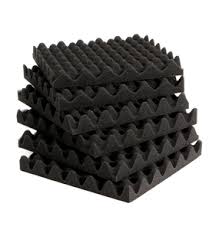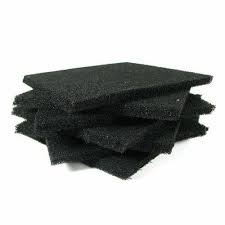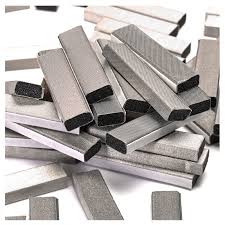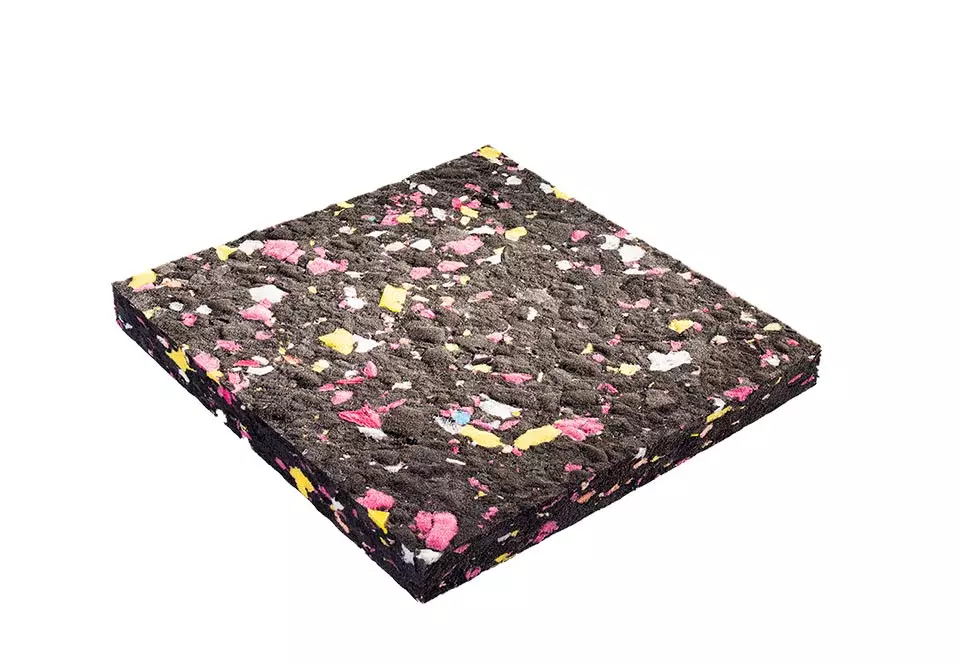ESD & EMI Foams and Enclosures
ESD (Electrostatic Discharge) and EMI (Electromagnetic Interference) are common problems in the electronics industry that can cause damage to sensitive electronic components. To mitigate these issues, ESD and EMI foams and enclosures are widely used. ESD and EMI enclosures are also widely used to protect electronic components from damage. These enclosures are typically made of conductive or magnetic materials, such as steel or aluminum, and can be customized to meet specific requirements. ESD and EMI enclosures are commonly used in industries such as aerospace, automotive, medical, and telecommunications.




| Product Specification | ||
|---|---|---|
| Product Code | SF908 | |
| Density Available | 70D, 85D, 110D, 165D | |
| Description | Re Bonded Chipped Polyurethane Foam | |
| Application | Used as Mats in Clean Room Applications, Automobile Industry, Auditoriums, Packaging Industry, Mattresses & etc. | |
| Third Party Confirmation | N.A. | |
| Note | Detail Technical Report Available on Request | |
Product Description
ESD foam is a specialized type of foam that helps to dissipate static electricity and prevent electrostatic discharge. ESD foam is made of conductive or dissipative materials, such as carbon-filled polyurethane or silicone, which help to ground the charge and prevent static buildup. ESD foam is commonly used in packaging materials to protect electronic components during transportation and storage.
EMI foam is a specialized type of foam that helps to block or shield electronic equipment from unwanted electromagnetic interference. EMI foam is made of materials that are conductive or magnetic, such as nickel-plated copper or silicone rubber filled with iron particles. EMI foam is commonly used in gaskets, seals, and other applications to prevent electromagnetic waves from entering or exiting the enclosure.
ESD & EMI Foam Characteristics
Both ESD and EMI enclosures have unique and strong characteristics that make them a necessity globally. For one, ESD foam providers ensure it has an electrostatic delay of less than 0.05 seconds. A few characteristics of these foams include surface resistivity of 106 to 108 ohms, uniform surface treatment, and more.
Additionally, ESD foam manufacturers in India offer tapes that are highly resistant to chemical reactions as well as have abrasion resistance. Manufacturers also ensure that ESD foam sheets’ performance isn’t affected by humidity and there’s permanent static dissipation performance.
EMI enclosures also have strong character traits like shielding, reflection, absorption, and multiple reflections. EMI enclosures have magnetic permeability and electrical conductivity. Moreover, they can be used in various ways like coatings, solid enclosures, screens, meshes, gaskets, and more.
As far as ESD & EMI enclosure properties are concerned, both are effective methods to remove static and electromagnetic interferences. Firstly, ESD foam sheets are commonly classified into two types. The first type of ESD foam is generally used for equipment enclosures, cleanroom glazing, and desiccator cabinets.
The other type of ESD foam sheet is produced with flexibility. It is used for fabricating parts, panels, and more. ESD foam manufacturers ensure that the sheets and tapes are flexible for heat bending as well as hard panel applications. The unique properties and coating of ESD foam ensure your machines and applications are free of electrostatic discharge, ensuring improved performance in the long run.
ESD & EMI Foam Applications
As one can see, ESD & EMI characteristics are quite unique and important. Here are some applications:
ESD Foam Applications: ESD foam manufacturers have tapped into its applications far and wide. It is used for various surfaces like covers, guards, access panels, machine windows & doors, static control shields, electronic equipment, conveyor line covers, cleanroom windows and doors, process instrumentation, pass-through modules, and more.
EMI Enclosure Applications: Generally, EMI enclosures are applied in electronic equipment and other devices and applications. Commonly, we can see EMI enclosures in medical devices, Wi-Fi routers, laptops & PCs, baby monitors, smartphones, AM & FM radios, walkie-talkies, broadcast televisions, and so on.
From this, we can understand that ESD & EMI enclosures have important functionality in daily life. ESD foam sheets and EMI enclosure coatings can help protect users from electrostatic and electromagnetic disruptions while improving the overall performance of the surface it’s applied to.
FAQ's
ESD and EMI foams are specialized materials designed to mitigate and control electrostatic discharge (ESD) and electromagnetic interference (EMI) in electronic and sensitive equipment applications. They are used to protect sensitive components from static charges and external electromagnetic interference.
ESD foams are primarily designed to dissipate or prevent the buildup of static electricity, protecting electronic components from electrostatic discharge. EMI foams, on the other hand, are designed to shield against external electromagnetic interference to prevent signals from being disrupted or compromised.
ESD and EMI protection is crucial to ensure the reliable operation of electronic devices. ESD can damage or destroy sensitive components, while EMI can disrupt communication signals, leading to malfunctions or data loss.
ESD and EMI foams are commonly used in electronics, telecommunications, medical devices, aerospace, and automotive industries. Any equipment with sensitive electronic components can benefit from their use.
ESD foams are typically made of materials with a high electrical conductivity that allow static charges to dissipate safely. Their effectiveness depends on the material's properties and thickness, as well as the specific requirements of the application.
Materials like conductive foam, conductive fabric, and metalized foam are commonly used in EMI foams to provide effective electromagnetic shielding. These materials block or redirect electromagnetic waves to prevent interference.
Yes, ESD and EMI foams can be customized based on the specific requirements of the application. This may include adjusting the material composition, thickness, and shape to meet the desired performance criteria.



